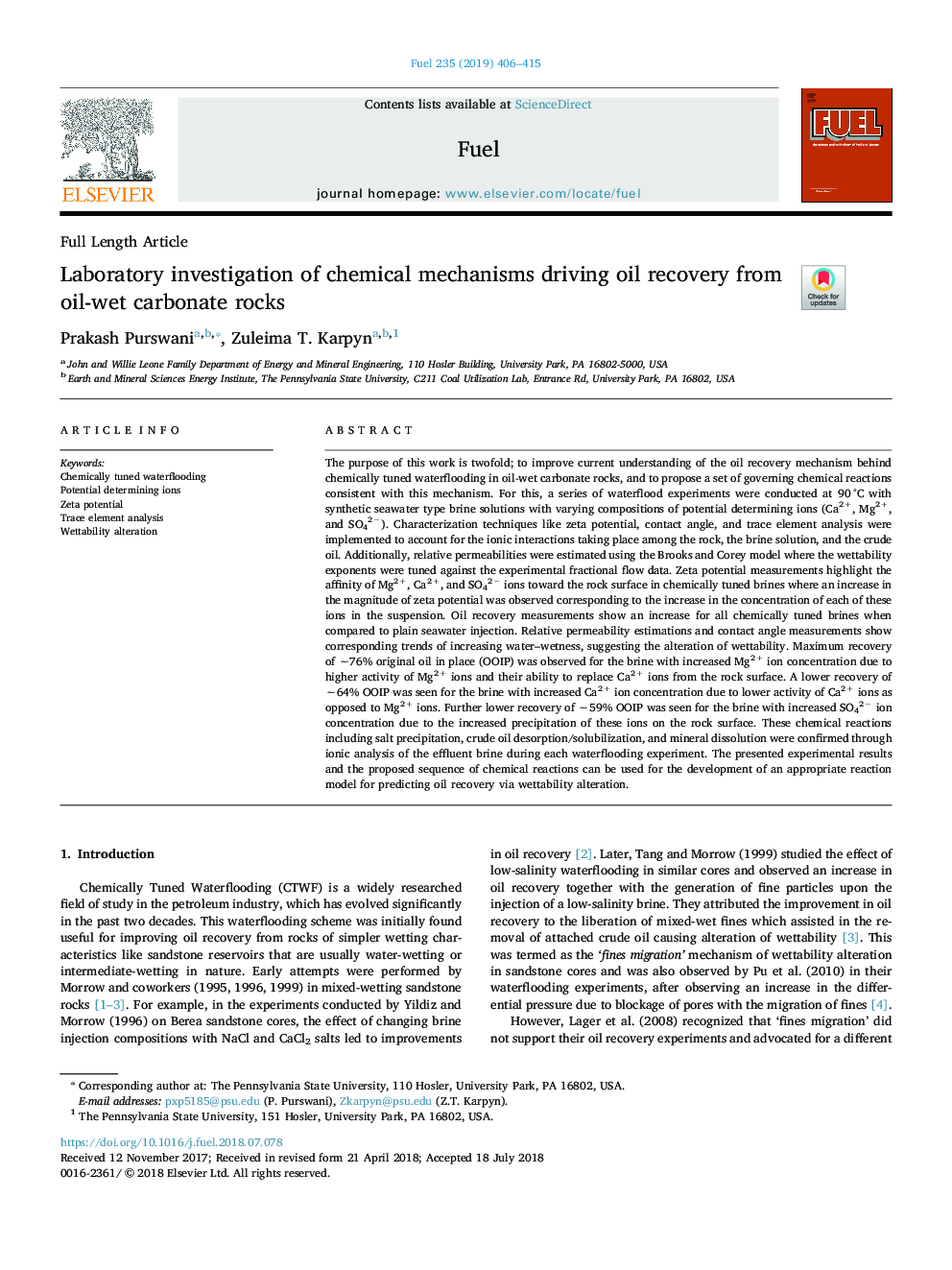| کد مقاله | کد نشریه | سال انتشار | مقاله انگلیسی | نسخه تمام متن |
|---|---|---|---|---|
| 6629934 | 1424929 | 2019 | 10 صفحه PDF | دانلود رایگان |
عنوان انگلیسی مقاله ISI
Laboratory investigation of chemical mechanisms driving oil recovery from oil-wet carbonate rocks
ترجمه فارسی عنوان
بررسی آزمایشگاهی مکانیزم های شیمیایی رانندگی روغن از سنگ های کربنات نفت خام
دانلود مقاله + سفارش ترجمه
دانلود مقاله ISI انگلیسی
رایگان برای ایرانیان
کلمات کلیدی
چالش آب آشامیدنی یونهای تعیین کننده بالقوه، پتانسیل زتا، تجزیه و تحلیل عنصر ردیابی، تغییرات رطوبت
موضوعات مرتبط
مهندسی و علوم پایه
مهندسی شیمی
مهندسی شیمی (عمومی)
چکیده انگلیسی
The purpose of this work is twofold; to improve current understanding of the oil recovery mechanism behind chemically tuned waterflooding in oil-wet carbonate rocks, and to propose a set of governing chemical reactions consistent with this mechanism. For this, a series of waterflood experiments were conducted at 90â¯Â°C with synthetic seawater type brine solutions with varying compositions of potential determining ions (Ca2+, Mg2+, and SO42â). Characterization techniques like zeta potential, contact angle, and trace element analysis were implemented to account for the ionic interactions taking place among the rock, the brine solution, and the crude oil. Additionally, relative permeabilities were estimated using the Brooks and Corey model where the wettability exponents were tuned against the experimental fractional flow data. Zeta potential measurements highlight the affinity of Mg2+, Ca2+, and SO42â ions toward the rock surface in chemically tuned brines where an increase in the magnitude of zeta potential was observed corresponding to the increase in the concentration of each of these ions in the suspension. Oil recovery measurements show an increase for all chemically tuned brines when compared to plain seawater injection. Relative permeability estimations and contact angle measurements show corresponding trends of increasing water-wetness, suggesting the alteration of wettability. Maximum recovery of â¼76% original oil in place (OOIP) was observed for the brine with increased Mg2+ ion concentration due to higher activity of Mg2+ ions and their ability to replace Ca2+ ions from the rock surface. A lower recovery of â¼64% OOIP was seen for the brine with increased Ca2+ ion concentration due to lower activity of Ca2+ ions as opposed to Mg2+ ions. Further lower recovery of â¼59% OOIP was seen for the brine with increased SO42â ion concentration due to the increased precipitation of these ions on the rock surface. These chemical reactions including salt precipitation, crude oil desorption/solubilization, and mineral dissolution were confirmed through ionic analysis of the effluent brine during each waterflooding experiment. The presented experimental results and the proposed sequence of chemical reactions can be used for the development of an appropriate reaction model for predicting oil recovery via wettability alteration.
ناشر
Database: Elsevier - ScienceDirect (ساینس دایرکت)
Journal: Fuel - Volume 235, 1 January 2019, Pages 406-415
Journal: Fuel - Volume 235, 1 January 2019, Pages 406-415
نویسندگان
Prakash Purswani, Zuleima T. Karpyn,
